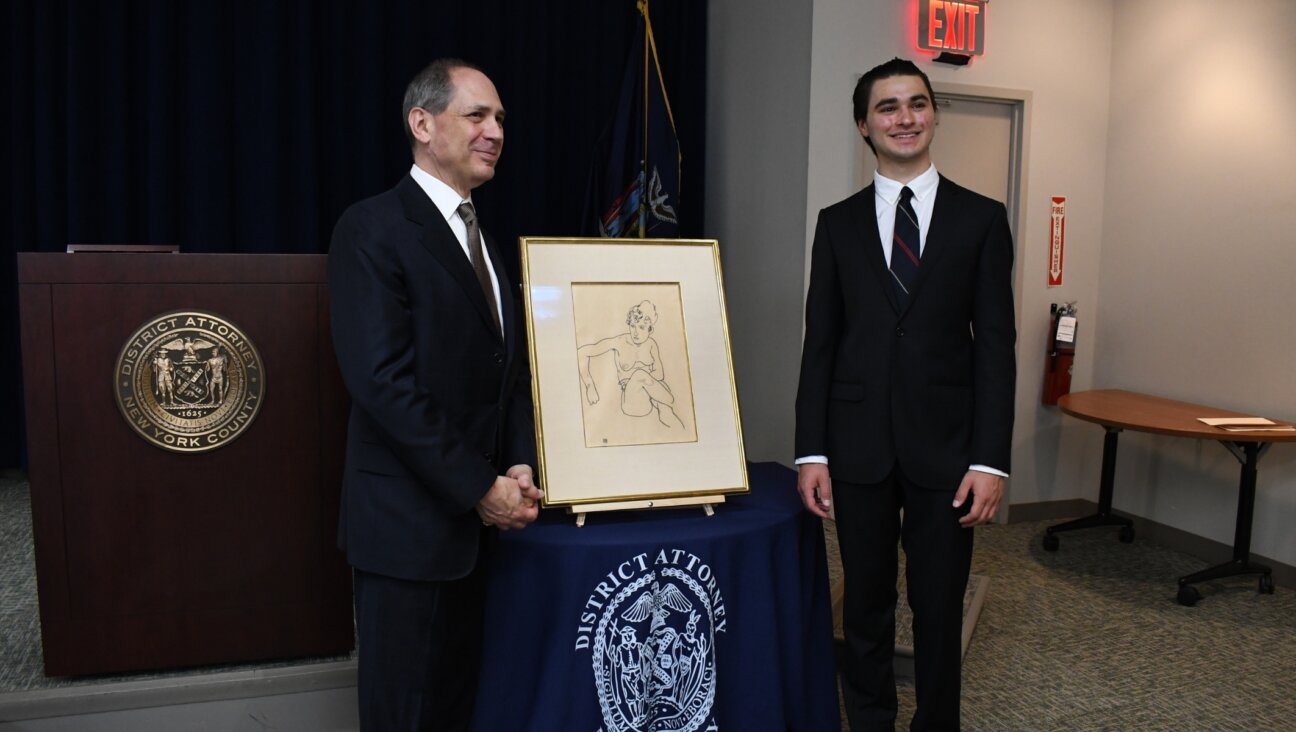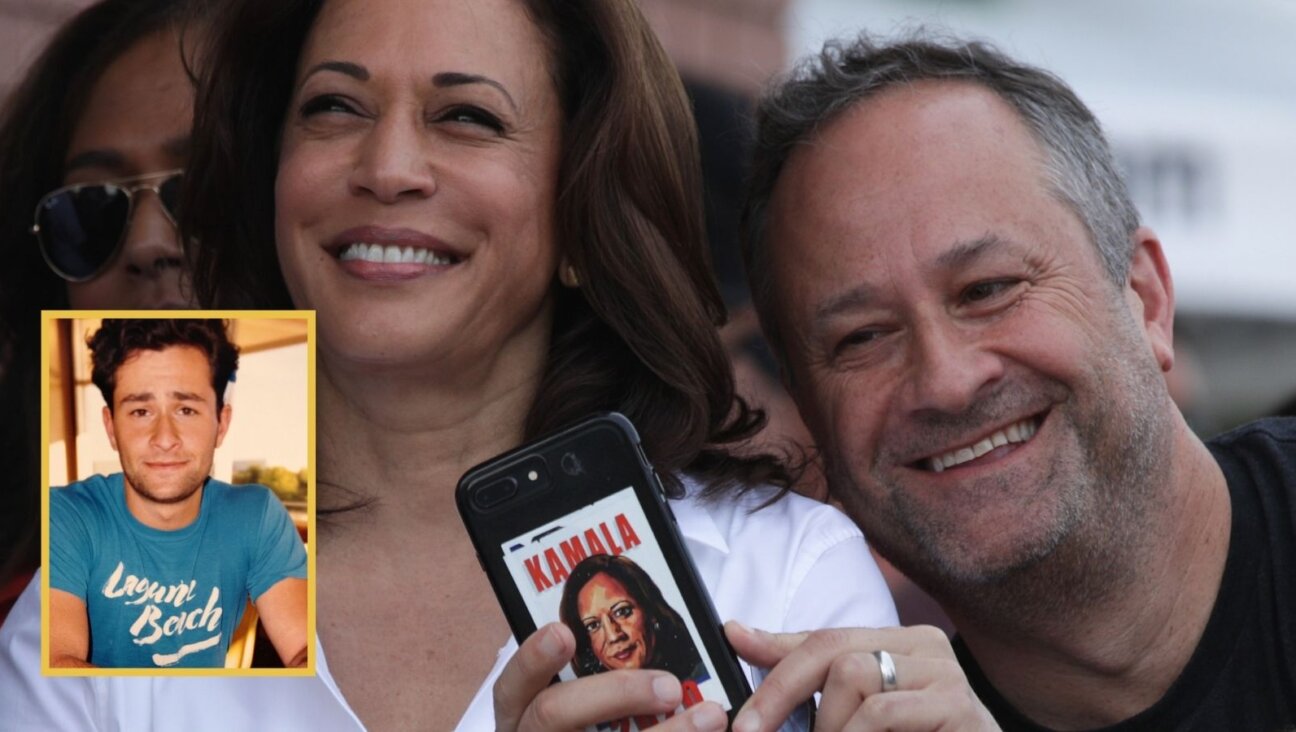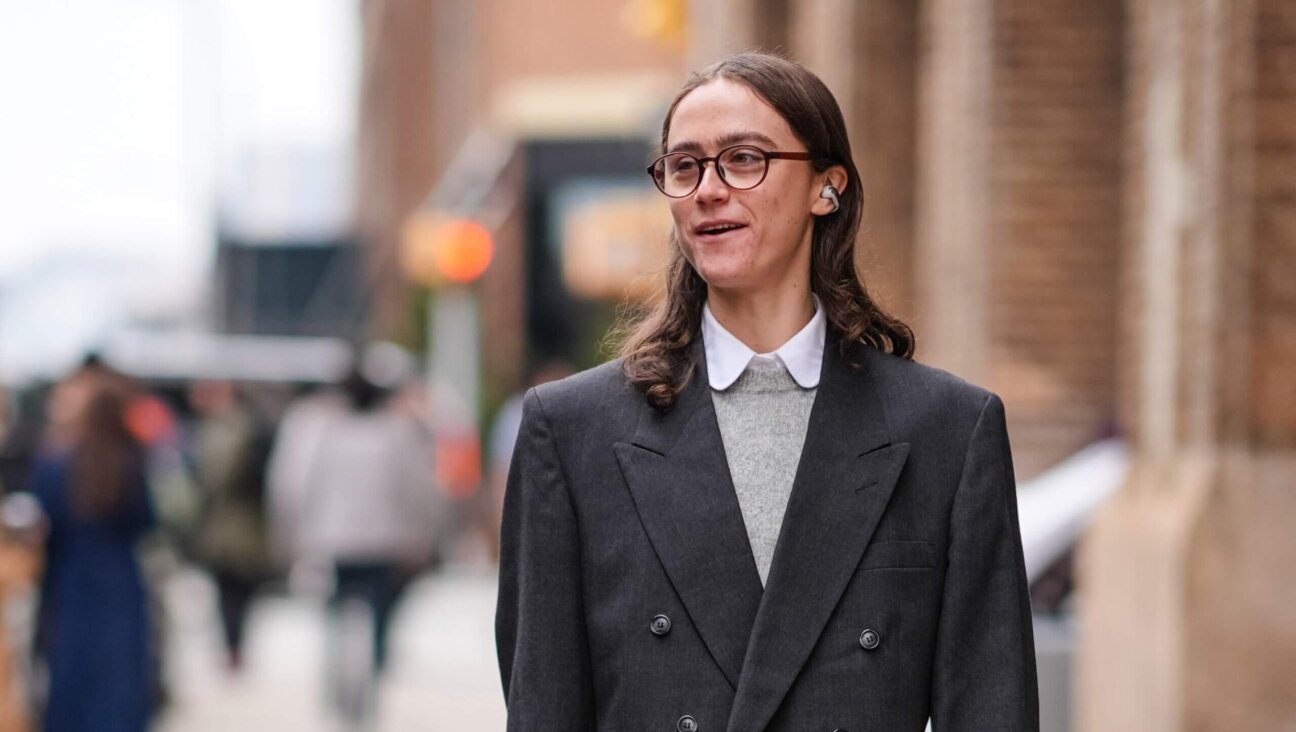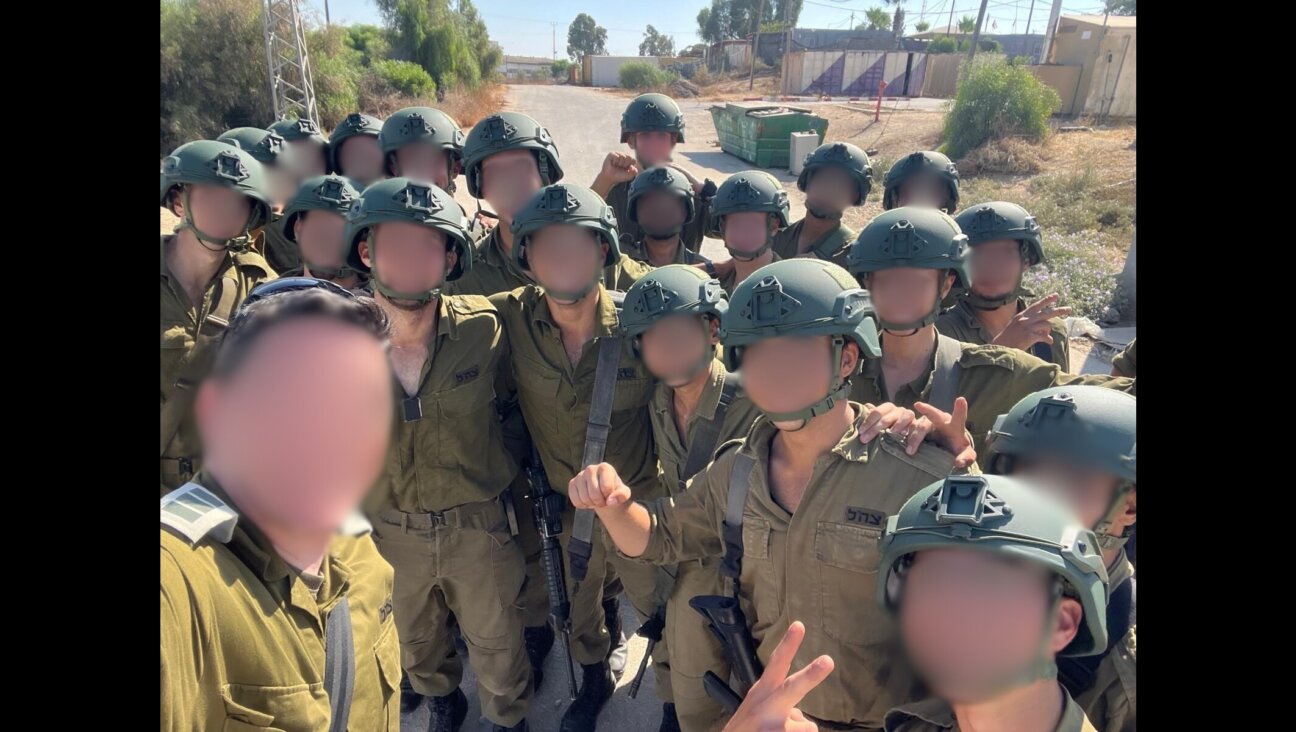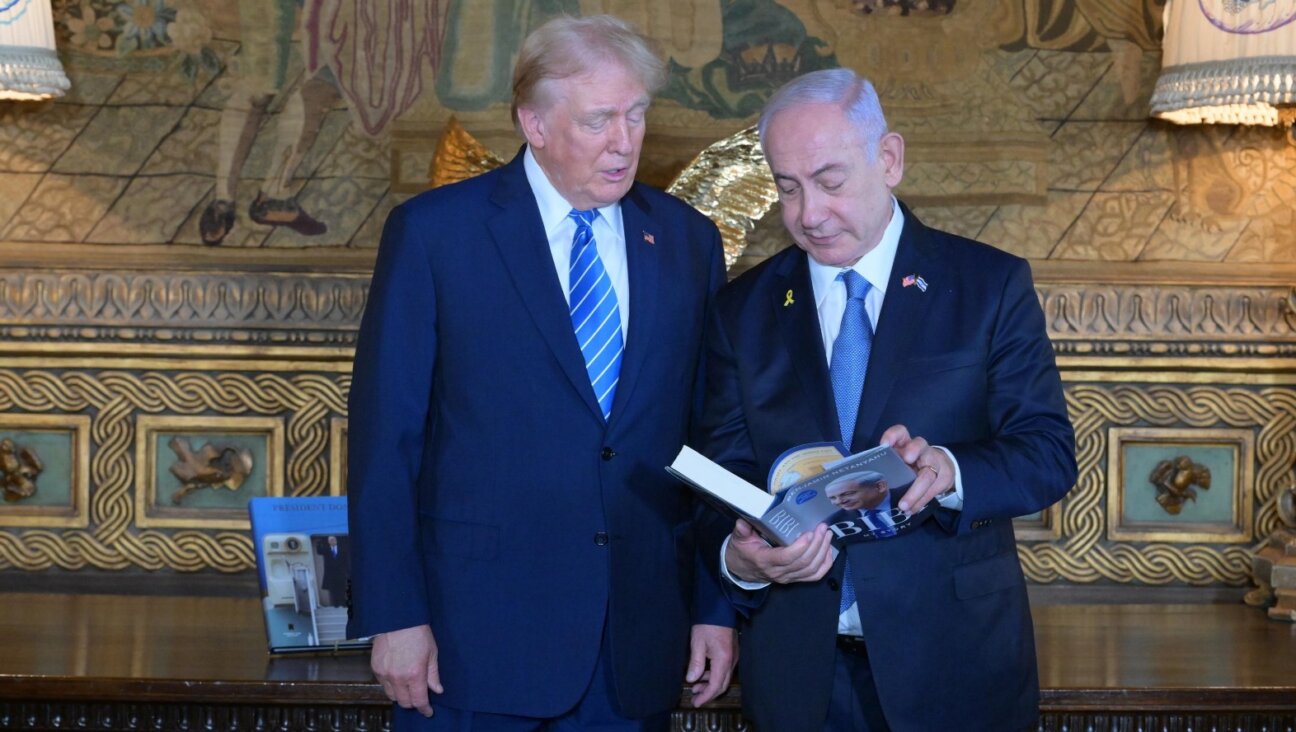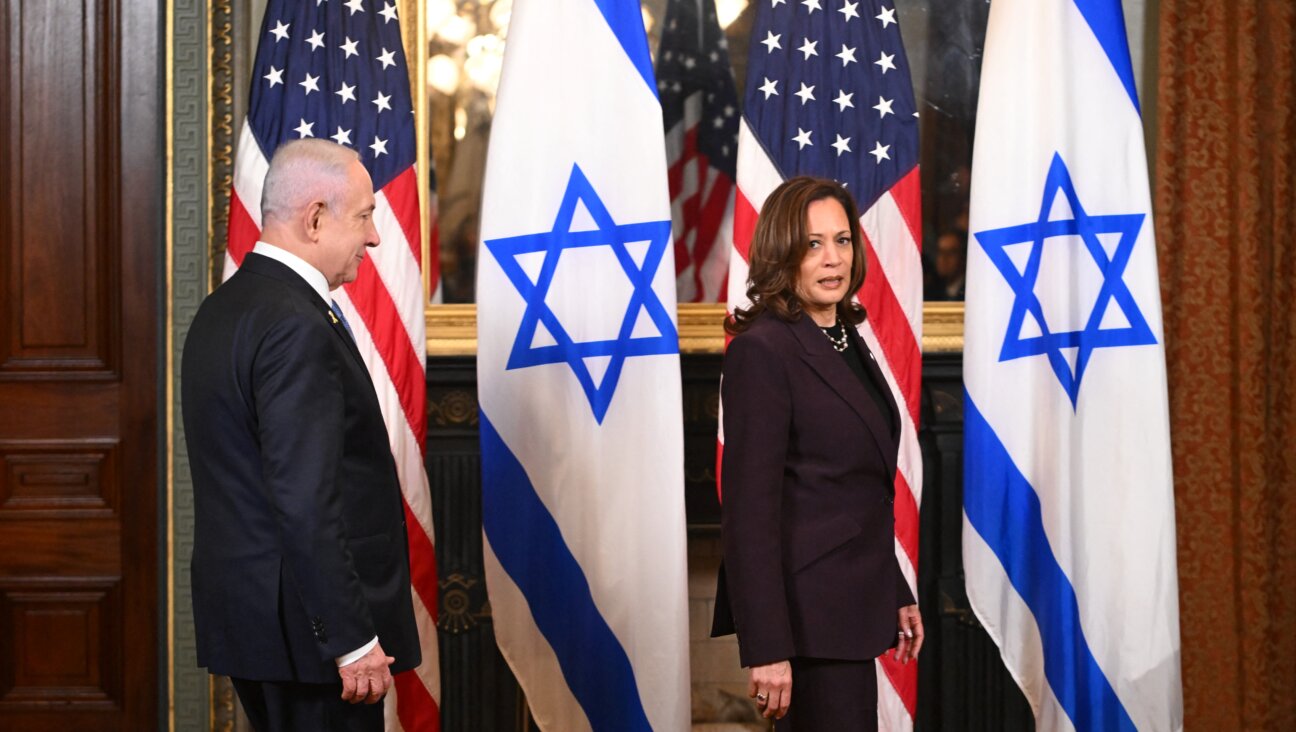What happens when you turn the Holocaust into a video game?
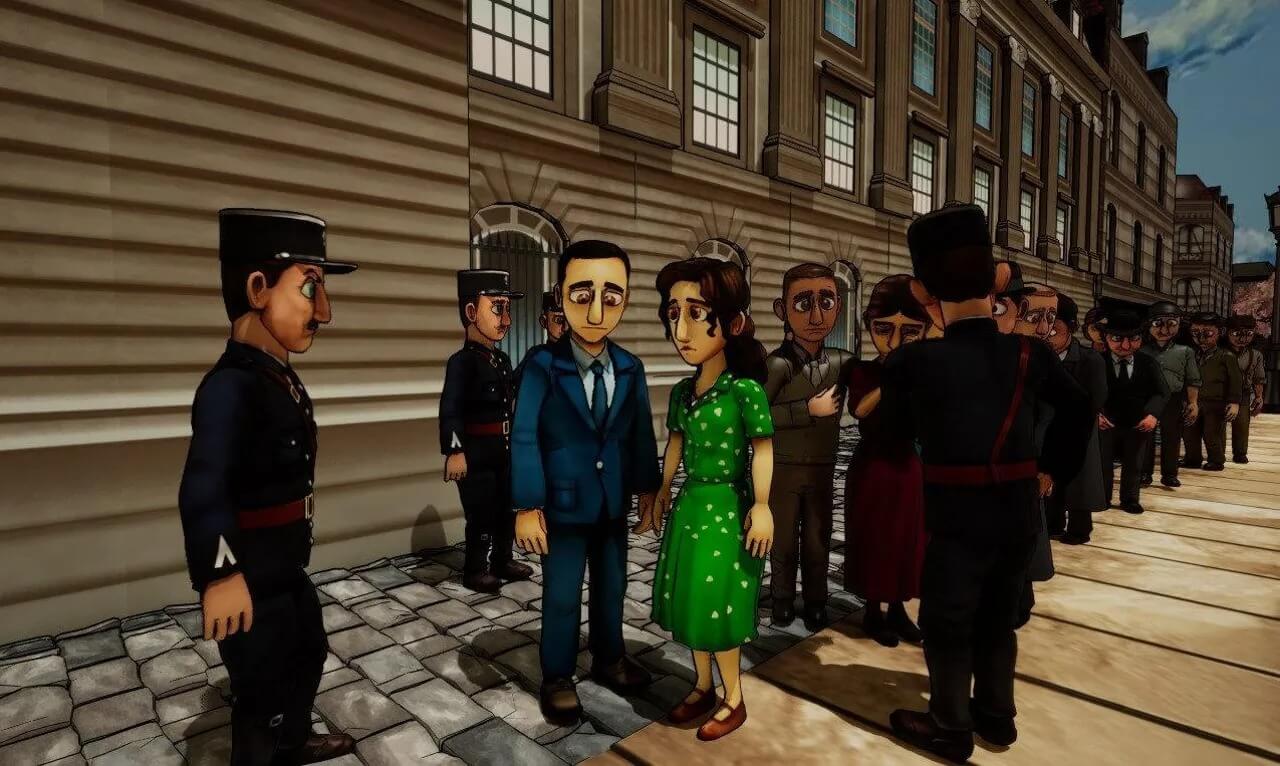
A scene from the video game ‘The Light in the Darkness,’ set in wartime France. Courtesy of Luc Bernard
This article originally appeared on Haaretz, and was reprinted here with permission. Sign up here to get Haaretz’s free Daily Brief newsletter delivered to your inbox.
For many non-gamers, video games are associated with light entertainment, scoring games and a sense of escapism. French-British video designer Luc Bernard is challenging this notion with “The Light in the Darkness” – which he says is the first video game to portray the Holocaust accurately.
Bernard, 36, is best known for creating the video games “Death Tales,” “Eternity’s Child” and “Mecho Wars,” and charity games like “Kitten Squad” for People for the Ethical Treatment of Animals. He acknowledges that while there are “a lot of preconceptions about video games and the gaming community,” things have changed as the genre has evolved. “First, video games today aren’t just ‘shoot ’em ups’ and don’t necessarily have a goal. Many games are more like an interactive film.”
His long-gestating new video game tells the story of a working-class family of Polish Jews living in France: Moses, his wife Bluma, their son Samuel, non-Jewish neighbor Maria and Bernard, a Sephardi Jew from colonized Algeria. All the characters are playable, and the game goes through scenes from the start of the war in 1939 until the Vélodrome d’Hiver (or “Vél d’Hiv”) Roundup – the largest French deportation of Jews, which took place in Paris on July 16-17, 1942.
“There is no winning,” Bernard says of his game, which is set to debut on X Box and Windows in 2023. “It’s about embodying these characters and the lack of control they as Jews had during that time.”
The video designer now lives in Los Angeles but was born in England. As a teenager he moved to rural France, where he was beaten up by neo-Nazis when they discovered he was Jewish as he tried to infiltrate their cell. This incident and his Jewish roots were the sparks that led him to think of a game that would deal with the memory of the Holocaust.
His first attempt, some 15 years ago, was called “Imagination is the Only Escape.” However, he was not ready for the furor his idea would generate within the Jewish community and also The New York Times, which thought the game would be an action-packed shooter game.
The Light in the Darkness will be arriving to @Xbox and Windows 10 in 2022.
— Luc Bernard (@LucBernard) November 16, 2021
Alongside the story mode (which follows a Polish Jewish family in France during the Holocaust), the educational mode will bring awareness to those who don't have access to Museums or school programs. https://t.co/H0HUIf16xo pic.twitter.com/moDMAdo2d5
Bernard was so distraught from the backlash that he put the project firmly on the back burner. But in January 2021, witnessing the rise of racist and antisemitic forces in the United States made him revisit the project with a newfound vigor.
“Not only did ‘Imagination is the Only Escape’ tell a completely different story than ‘The Light in the Darkness,’ but it also didn’t have the research I have put into the new game – even if they are both set in France during the Holocaust,” he says.
The new game tries to be as historically accurate as possible, with Bernard and his associates having interviewed Holocaust survivors, consulted with experts and made sure that the world they were creating was precise – right down to the lists of items Jews sent for interrogation had to bring to the French police.
‘Fantasy games’
Bernard insists that his will be the first genuine video game about the Holocaust, after various games-in-progress were nixed due to a public outcry. “There have been some games done in bad taste – like being a Nazi in Auschwitz. ‘Wolfenstein,’ meanwhile, is just a shooter game in a fictional camp. I do not consider that a proper game about the Holocaust. It’s just fantasy games,” he says of the games that came before his.
His insistence on accuracy and telling authentic stories rather than creating a fantastical experience comes from the circuitous road Bernard and his idea had to go through, and the rise of antisemitism in the gaming community.
For the past decade, there has been a steep rise in U.S. far-right activists using the internet and the gaming community to capture hearts and minds.
“Online video games don’t have moderation and aren’t recorded, so they have become a feeding ground for the extreme right,” he explains. “During games, they’ll spew something racist and see if someone takes a bite. Then they’ll connect with them over chats and forums. That’s how radicalization happens.
“Take Nick Fuentes, the far-right racist pundit who dined with Donald Trump and Kanye West [at Mar-a-Lago],” Bernard says. “He’s 24 and understands the power of the gaming community, and he got his crowd through live streaming on a gaming community platform. In some video games, users could pick Nazi avatars. There are even games that sanitize Nazi atrocities by claiming soldiers were only ‘German,’” he adds.
An ADL survey released earlier this month revealed that 20 percent of adults reported being exposed to white supremacist ideologies in online games this year – up from 8 percent in 2021. “While there is no doubt there are positive benefits for millions of gamers, these benefits must be balanced with the unmitigated spread of hate and harassment running rife in these games,” warned ADL CEO Jonathan Greenblatt.
The gaming community has also been linked to mass shootings like the deadly 2019 attack on a Christchurch mosque, where the shooter’s path to radicalization started in online multiplayer games.
“Video gaming has become a point of inspiration for mass shooters, and vice versa,” Bernard says. “Whenever a shooting happens [in real life], people in forums rank it: X points for people killed, X points for weapons used, etc.”
A dated mind-set
Bernard says his goal with “Light in the Darkness” is to expose young people to accurate historical information about the Holocaust, in an bid to counter the misinformation and racism online – something he believes is lacking in legacy anti-hate organizations.
“The problem is that, despite their crucial work, the large Holocaust remembrance organizations are stuck in a dated mind-set. They’ve disregarded gaming communities because they can’t see the threats. Survey after survey shows a rise in racism and antisemitic speech, and yet they still don’t have a plan of action. When spaces are left open, extreme-right forces take over,” Bernard says.
“The [Holocaust] survivors are getting older, and more time has passed. Not only that: people are getting their information in different ways. Doing the same things we used to do isn’t as effective – especially with younger people. Why not use a platform they’re on already and engage with content they’re used to consuming?” he asks.
The designer has financed the game himself. “First, it was hard to get companies to touch such a controversial project. Second, I made a decision that this game has to be free. It’s first and foremost an educational tool and, as such, it needs to be accessible to the largest amount of people. The major video companies won’t fund something that’s not profitable,” he says.
“Yes, going to Auschwitz is important, but most of us don’t have the means to travel there,” he continues. “And in countries where the Holocaust doesn’t exist in school textbooks or is denied by governments, kids aren’t getting the education they need. The beauty of video games is that they’re accessible to everyone worldwide. You can sit in Los Angeles and play with someone from Senegal. That’s what the far right discovered long ago, and it’s time for people to counter it.”
Bernard does see the beginnings of a community in the gaming world that is creating its own content. “I just had a talk with students from Tel Aviv University who were inspired to create their own game,” he recounts. “There are people out there – and there have been experiments in the past, like Asi Burak’s game “PeaceMaker,” which simulates the Israeli-Palestinian conflict, or video games about the refugee crisis. That’s what’s powerful about video games: You can create your own story and let others see the world through your eyes.”
Edna Friedberg, a historian at the U.S. Holocaust Memorial Museum in Washington, welcomes such efforts. She says that if they are done with “rigor, sensitivity and accuracy,” such games could be “an important tool” to engage and educate young people.
“There can be a knee-jerk reaction to the word ‘game’ because it sounds like it’s making fun out of something that is anything but fun. But I think that’s a misunderstanding of what games mean, especially to young people. I haven’t played this particular game so I can’t endorse it, but many are simply immersive experiences.
“We as educators have found that you really need to meet the audience where they are. And often when it comes to young people, these kinds of immersive virtual universes are where they spend a lot of time – or at least where we can get their attention,” Friedberg says.
A message from our editor-in-chief Jodi Rudoren

We're building on 127 years of independent journalism to help you develop deeper connections to what it means to be Jewish today.
With so much at stake for the Jewish people right now — war, rising antisemitism, a high-stakes U.S. presidential election — American Jews depend on the Forward's perspective, integrity and courage.
— Jodi Rudoren, Editor-in-Chief






